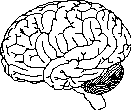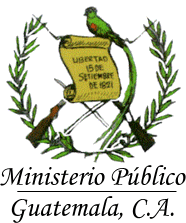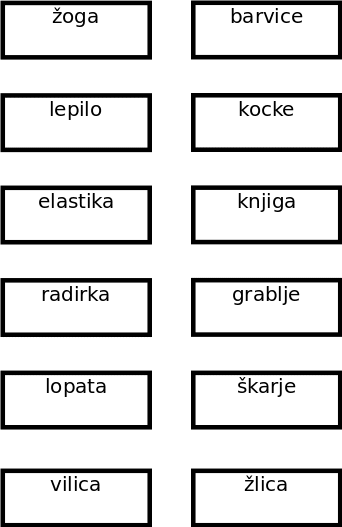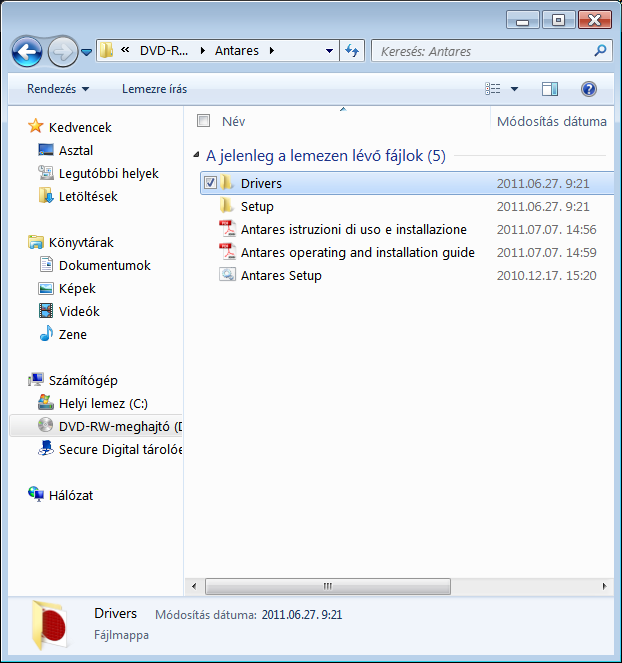AH 323 UNCONSCIOUS ATHLETES LABORATORY I PRIMARY SURVEY A
13 CORPORATIZING THE UNCONSCIOUS MEMES NEUROMARKETING AND CHRISTOPHER NOLANS40 DO UNCONSCIOUS EMOTIONS INVOLVE UNCONSCIOUS FEELINGS? (PUBLISHED
41 ZD SUBJECTIVE MEASURES OF UNCONSCIOUS KNOWLEDGE ZOLTÁN DIENES
AH 323 UNCONSCIOUS ATHLETES LABORATORY I PRIMARY SURVEY A
AHA! AND INSIGHT SOLUTIONS INCORPORATING UNCONSCIOUS THOUGHT1 PATTY KUEHN
AM I RACIST EXPLORING UNCONSCIOUS BIASES AND PREJUDICES AMONG
Unconscious Athlete
AH 323
Unconscious Athletes Laboratory
Primary Survey
Check for responsiveness (2+)
_______________________________________________________________________________________________
Airway
Position model supine in cervical flexion, chin tucked to impair airway
Position model in appropriate head tilt and /or chin lift position
Breathing
Determine status of respirations through listening for breath sounds & feeling breaths on cheek
Determine status of respirations by watching chest rising
Circulation
Find pulse at carotid artery
Take pulse at brachial artery
Take pulse at radial artery
Take pulse at femoral artery
Call 911
Secondary Survey
History (2+)
_______________________________________________________________________________________________
_______________________________________________________________________________________________
Observation
Alignment & position
____________________________________________________________________________________________
Bleeding
____________________________________________________________________________________________
Respirations
Count respirations per minute through listening for breath sounds & feeling breaths on cheek and record
Count respirations per minute by watching chest rising and record
Abnormal breathing patterns (7+)
__________________________________________________________________________________________
Pupils
Size (dilated vs. constricted)
Equality
Reaction to light (pupillary reflex or constricting response)
Skin color (rubor, pallor, cyanosis) cheeks, nasal bridges, neck, upper chest, abdominal midline
Check nail beds for capillary refill
Compare elevated arm vs. dependent arm
Signs of trauma (4+)
____________________________________________________________________________________________
____________________________________________________________________________________________
Posturing (2+)
____________________________________________________________________________________________
____________________________________________________________________________________________
Physical examination
Palpation
Pulse
Take and record pulse at carotid artery and record
Take and record pulse at brachial artery and record
Take and record pulse at radial artery and record
Take and record pulse at femoral artery and record
Blood pressure
Stethoscope & sphygmomanometer
Skin temperature
Palpate several body areas with back of hand to appreciate difference in skin temperature
Stress
Reaction to pain
– Localizing - If patient moves limb when stimulus applied to more than one point or tries to remove examiner’s hand that is applying the painful stimulus (Glasgow coma scale value of 5)
– Normal reflex withdrawal - If patient withdraws from the painful stimulus rapidly (Glasgow coma scale value of 4)
Skin prick of hands or feet
Pinching skin
Knuckle to sternum compression
Nipple pressure
Calf pressure
Trapezius squeeze
Squeezing tissue between thumb & index finger
Fingertip squeeze
Squeezing object between 2 fingers
Emergency Medical Care
Vital Signs
Treat for Shock
Monitor Victim
Check status of EMS
Referral parameters
_______________________________________________________________________________________________
AH 323
Unconscious Athletes

Primary Survey
_____ Airway _________________________________________________________________________
_____ Breathing _______________________________________________________________________
_____ Circulation ______________________________________________________________________
Secondary Survey
_____ History _________________________________________________________________________
_____ Question witnesses _____________________________________________________________
_____ Level of consciousness __________________________________________________________
_____ Observation _____________________________________________________________________
_____ Alignment & position __________________________________________________________
_____ Bleeding _____________________________________________________________________
_____ Respirations __________________________________________________________________
_____ Pupils _______________________________________________________________________
_____ Skin color ____________________________________________________________________
_____ Signs of trauma ________________________________________________________________
_____ Posturing _____________________________________________________________________
_____ Palpation _______________________________________________________________________
_____ Pulse ________________________________________________________________________
_____ Skin temperature _______________________________________________________________
_____ Signs of trauma ________________________________________________________________
_____ Reaction to pain _______________________________________________________________
_____ Stress __________________________________________________________________________
CARL JUNG ARCHETYPES AND THE COLLECTIVE UNCONSCIOUS CARL JUNG
COURSE TITLE ADDRESSING UNCONSCIOUS BIAS IN THE EEOHRTRAINING PROCESS
DANCE MOVEMENT AND THE UNCONSCIOUS (1954) BY MARY STARKS
Tags: athletes laboratory, unconscious athletes, survey, primary, athletes, unconscious, laboratory
- ILAR J VOLUME 52 NUMBER 2 2011 SPINELESS WONDERS
- DISABILITY SKILLS AND EMPLOYMENT A REVIEW OF RECENT STATISTICS
- 3 FJGP ACTO TESTAMENTO CERRADO OTORGADO POR NUMERO
- CALIDAD RURAL CALIDAD REAL CONGRESO DE TERRITORIOS RURALES CON
- A RITMÉTICA – QUINTO GRADO DE PRIMARIA EFECTUAR
- SZAKMAI ÖNÉLETRAJZ NÉV SZENDRŐI JÓZSEF ÁLLAMPOLGÁRSÁG MAGYAR SZÜLETÉS
- CERTIFICADO EUROPEO DE PSICOLOGÍA (EUROPSY) PORTAFOLIO DE COMPETENCIAS
- JONAVOS RAJONO SAVIVALDYB4S KULTŪROS CENTRAS SUPAPRASTINTŲ PIRKIMŲ ŽURNALAS 2017M
- OKUL ADI BİLTAN ANAOKULLARI TARIH1KASIM2011 YAŞ GRUBU (AY) 60–72
- 1 RECURSOS EDUCATIVOS BACHILLERATO PIZARRA DIGITALECONOMÍA Y ORGANIZACIÓN
- NO F 172018(BOT)O&M PAKISTAN AGRICULTURAL RESEARCH COUNCIL DIRECTORATE OF
- DAUGAVPILS RAJONA PARTNERĪBAS ATTĪSTĪBAS STRATĒĢIJA DAUGAVPILS RAJONA PARTNERĪBAS ATTĪSTĪBAS
- REALTIME MULTIOBJECTIVE OPTIMIZATION OF OPERATION OF WATER SUPPLY SYSTEMS
- IMPROVING YOUR READING SKILLS READ THE TEXT ANSWER THE
- UTILISATION DE LA GRAINE DE MORINGA ESSAIS DE
- LOS TUMORES DEL ESTROMA GASTROINTESTINAL SON UNA ENTIDAD CLÍNICA
- LAURIE S EDGE V PROVIDENCE ALASKA MEDICAL CENTER ALASKA
- ACCESS TO INFORMATION ON THE ENVIRONMENT (AIE) THE EUROPEAN
- VARWWWDOC4PDFCOMTEMP87534DOC APPLICATION FOR A LEARNERSHIP AGREEMENT TERMINATIONCANCELLATION NB ALL
- LOKAL DH POLITIK I PRAKSIS GUIDE TIL LOKALPOLITIK INDLEDNING
- SOSYAL GÜVENLİK KURUMU DİSİPLİN AMİRLERİ CETVELİ MERKEZ TEŞKİLATI EK
- NAME CORE DATE QUESTIONS TO RESPOND
- Ðïࡱáþÿ ¥á Ø¿dbjbjãã P²¡d¡dx9alé¡ÿÿÿÿÿÿx88®®®n Znznznpên¬vodn Ñï|æq(rlzrzrzraênx8fê«êìîîîîîîîîîîîîîmñr¿óbïx99®»êêaê»ê»êïzrzråw«ïîîî»êx86x8ezr®zr¾îî»êìîîîªý²° Þ®~ã Z
- PLEASE PRINT THIS SHORT FORM ON THE MO 345
- LABORATORY EMERGING PATHOGENS INITIATIVE (EPI) VERSION 52 TECHNICAL AND
- CATEGORIZACIÓN DEL PARQUE EDIFICADO PARA LA REHABILITACIÓN ENERGÉTICA DE
- DRAFT LILLOOET LAND AND RESOURCE MANAGEMENT PLAN
- MODEL DEL DOCUMENT ACREDITATIU DE LA REPRESENTACIÓ
- 10A NCAC 13P 1504 TRAUMA CENTERS (A) THE DEPARTMENT
- SAMSUN BÜYÜKŞEHİR BELEDİYESİ MECLİS DENETİM KOMİSYONU 2020 YILI DENETİM
 PODER JUDICIÁRIO JUSTIÇA DO TRABALHO TRIBUNAL REGIONAL DO TRABALHO
PODER JUDICIÁRIO JUSTIÇA DO TRABALHO TRIBUNAL REGIONAL DO TRABALHO RECTÁNGULO 7 AYUNTAMIENTO DE NÁJERA REAPERTURA PISCINAS CLIMATIZADAS E
RECTÁNGULO 7 AYUNTAMIENTO DE NÁJERA REAPERTURA PISCINAS CLIMATIZADAS EZČU PLZEŇ ABSTRAKT PŘEDNÁŠKY PRAHA – MALÁ STRANA J
OPISNO IZVJEŠĆE O PROVEDBI PROGRAMAPROJEKTA ZA 2017 GODINU 1
2 VIGÉSIMA TERCERA REUNIÓN DE CONSULTA OEASERFII23
 APRIL 2053 SUNDAY MONDAY TUESDAY WEDNESDAY THURSDAY FRIDAY
APRIL 2053 SUNDAY MONDAY TUESDAY WEDNESDAY THURSDAY FRIDAY APPENDIX C6 OHIO WATER MICROBIOLOGY LABORATORY SEDIMENT SAMPLE COLLECTION
APPENDIX C6 OHIO WATER MICROBIOLOGY LABORATORY SEDIMENT SAMPLE COLLECTION SĄD REJONOWY DLA WARSZAWY MOKOTOWA W WARSZAWIE KARTA INFORMACYJNA
SĄD REJONOWY DLA WARSZAWY MOKOTOWA W WARSZAWIE KARTA INFORMACYJNA12 UNIVERSITY OF ALBERTA DEPARTMENT OF EDUCATIONAL PSYCHOLOGY SCHOOL
 NEDĒĻAS EKSPERTI RVANAGA NVAN GEJEKA P25 BLOKS PIEKTĀS NEDĒĻAS
NEDĒĻAS EKSPERTI RVANAGA NVAN GEJEKA P25 BLOKS PIEKTĀS NEDĒĻAS 8 ELEMENTARE ZEITREIHENANALYSE SITUATION DIE STICHPROBENWERTE YI EINES
8 ELEMENTARE ZEITREIHENANALYSE SITUATION DIE STICHPROBENWERTE YI EINES PERATURAN PEMERINTAH REPUBLIK INDONESIA NOMOR 45 TAHUN 2004
PERATURAN PEMERINTAH REPUBLIK INDONESIA NOMOR 45 TAHUN 2004RETNINGSLINJER STIPENDORDNING FOR HØYERE UTDANNING §1 FORMÅL A
 MINISTERIO PÚBLICO GUATEMALA CA DOCUMENTOS DE LICITACIÓN PÚBLICA CONTRATACIÓN
MINISTERIO PÚBLICO GUATEMALA CA DOCUMENTOS DE LICITACIÓN PÚBLICA CONTRATACIÓNARGUMENTO UN JOVEN NOBLE ESPAÑOL LLAMADO DON JUAN TENORIO
 VICERRECTORADO DE INVESTIGACIÓN IKERKETA ERREKTOREORDETZA VICERRECTORADO DE INVESTIGACIÓN IKERKETA
VICERRECTORADO DE INVESTIGACIÓN IKERKETA ERREKTOREORDETZA VICERRECTORADO DE INVESTIGACIÓN IKERKETA KULLANMA TALİMATI UPADİL 50 MG10 ML IV ENJEKSIYONLUK ÇÖZELTI
KULLANMA TALİMATI UPADİL 50 MG10 ML IV ENJEKSIYONLUK ÇÖZELTITURINYS 1 AIBĖS 7 1 AIBĖS SĄVOKA 7 2
 DIDAKTIČNE KARTICE ZA METODIKO PLESNE JEZOKOVNEIN GLASBENE VZGOJE ORODJA
DIDAKTIČNE KARTICE ZA METODIKO PLESNE JEZOKOVNEIN GLASBENE VZGOJE ORODJA HASZNÁLATI ÚTMUTATÓ COBRA ANTARES (USB) PROGRAMOZÓ KÉSZÜLÉKHEZ AZ USB
HASZNÁLATI ÚTMUTATÓ COBRA ANTARES (USB) PROGRAMOZÓ KÉSZÜLÉKHEZ AZ USB